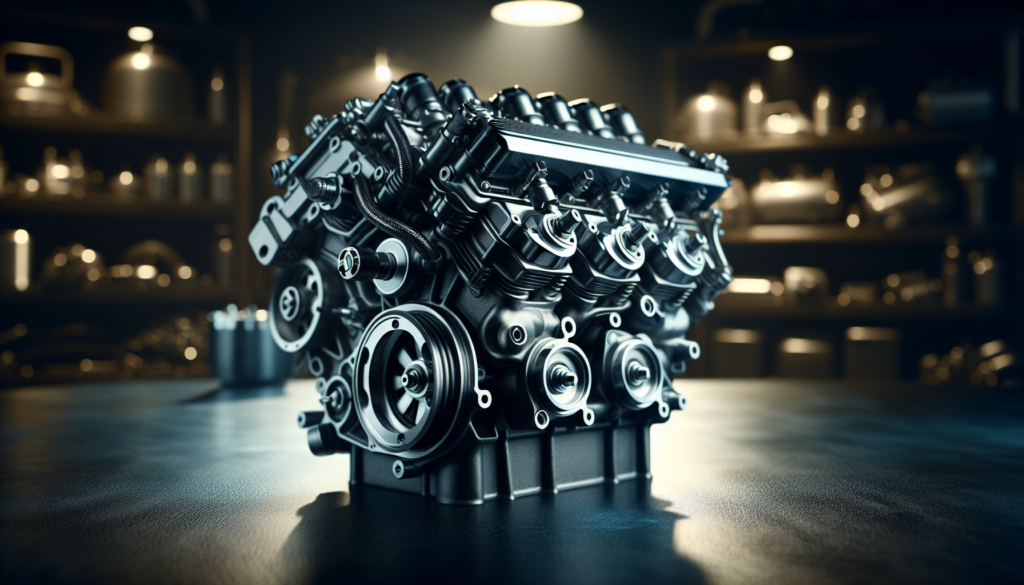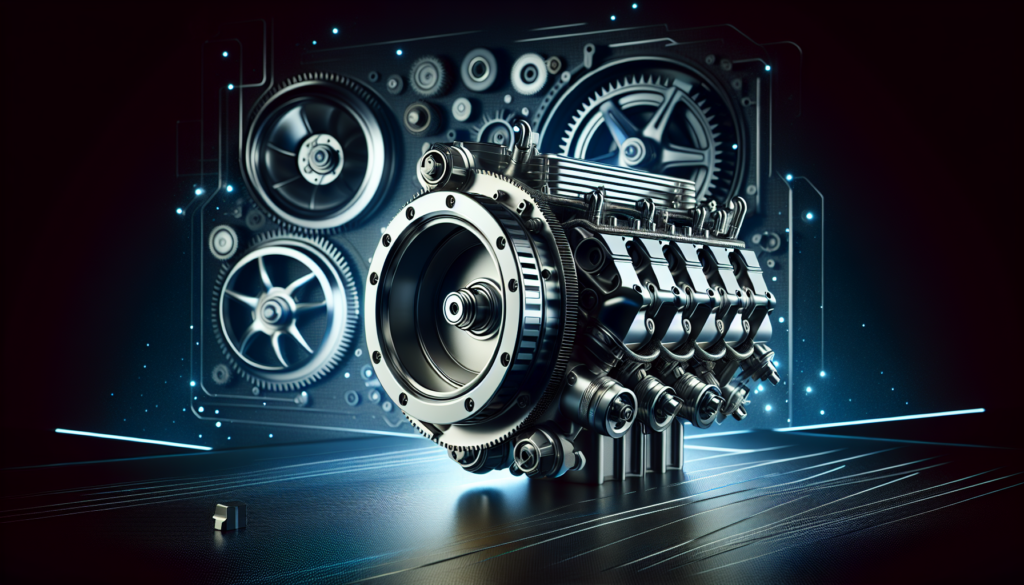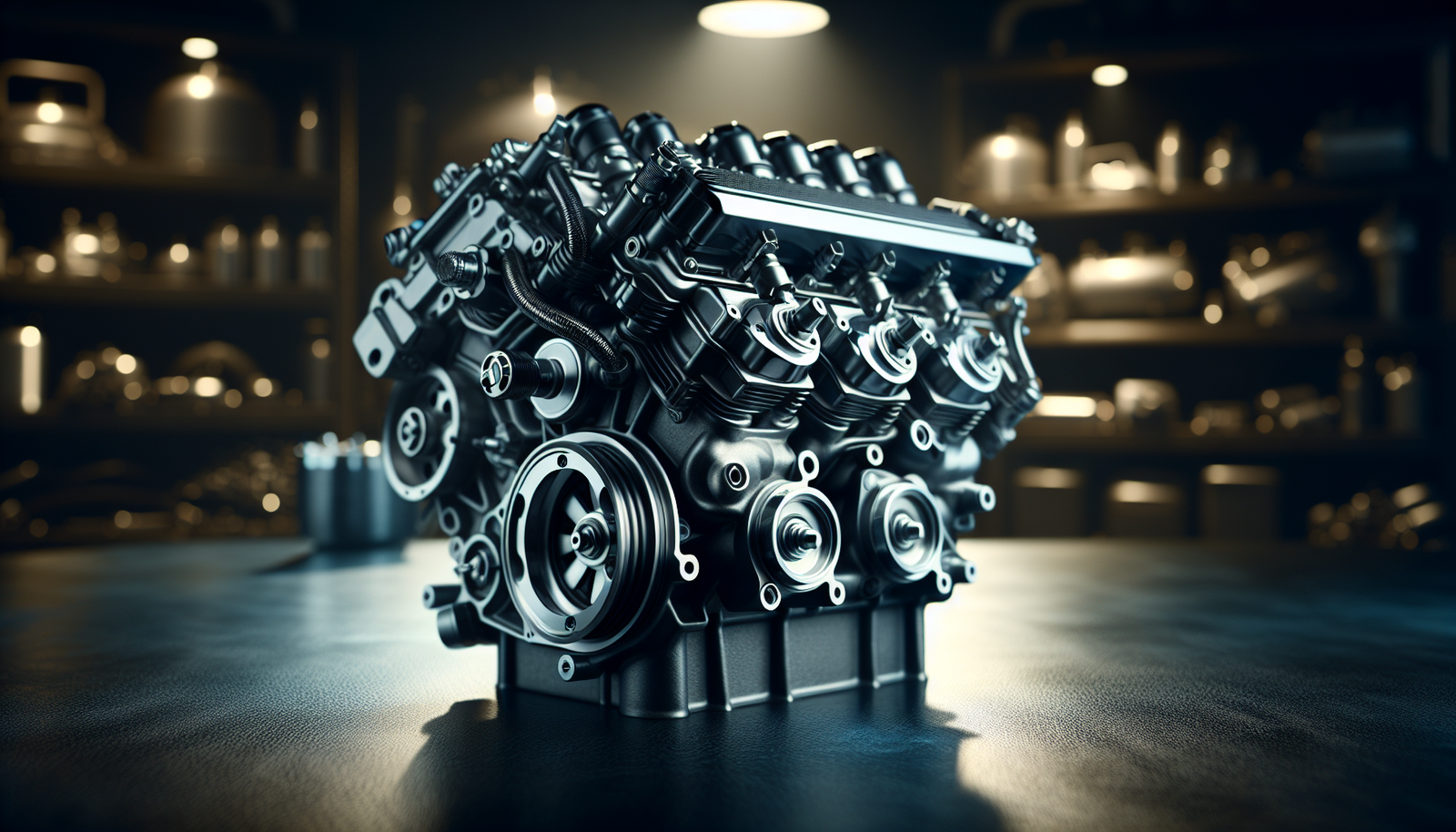Are you a boat enthusiast looking to enhance the performance of your beloved vessel? If so, you’ll want to dive into the world of aftermarket parts for boat engine customization. Choosing the right aftermarket parts can make all the difference when it comes to improving horsepower, fuel efficiency, and overall performance. In this article, we will guide you through the process of selecting the perfect aftermarket parts for your boat engine customization needs, ensuring that you make the right choices and achieve optimal results on the water.

Researching Aftermarket Parts
When it comes to customizing your boat’s engine, researching aftermarket parts is crucial. This process involves identifying the specific parts you need, understanding your boat’s engine, and determining the compatibility of the parts.
Identifying the Parts You Need
Before you start researching aftermarket parts, it’s essential to identify the specific parts you need for your boat engine. This can be done by referring to your boat’s documentation or consulting with a professional. Knowing exactly what parts you require will streamline your research process and ensure you make informed decisions.
Understanding Your Boat’s Engine
To effectively choose aftermarket parts for your boat’s engine customization, it’s important to have a thorough understanding of how your engine works. This knowledge will help you determine which parts are compatible and suitable for enhancing its performance. Familiarize yourself with the different components of your engine, such as the exhaust system, fuel system, ignition system, intake system, and more.
Determining the Compatibility of Parts
Compatibility is key when selecting aftermarket parts for your boat’s engine customization. Not all parts are universal, and they may vary in terms of size, design, or specifications. To ensure a seamless integration of aftermarket parts, it’s crucial to determine their compatibility with your boat’s engine. Consulting your boat’s documentation, seeking professional advice, and referencing manufacturer’s recommendations can help you make the right choices.
Considerations for Choosing Aftermarket Parts
When choosing aftermarket parts for your boat’s engine customization, there are several important considerations to keep in mind. These factors include quality and reliability, performance enhancement, budget constraints, and warranty and customer support.
Quality and Reliability
One of the primary considerations when selecting aftermarket parts is their quality and reliability. Ensure that the parts you choose are manufactured by reputable brands known for their superior craftsmanship. Reading customer reviews and evaluating the reputation of brands can provide valuable insights into the quality and reliability of the aftermarket parts you are considering.
Performance Enhancement
Whether you’re aiming for increased power, improved fuel efficiency, or enhanced overall performance, aftermarket parts can help you achieve your desired results. Determine the specific goals you have for your boat’s engine customization and choose aftermarket parts that align with those objectives. Consider options such as upgraded exhaust systems, fuel systems, ignition systems, intake systems, propellers, superchargers, and turbos, based on the performance enhancements you seek.
Budget Constraints
Budget is always a crucial factor when making any purchasing decisions. Before diving into your research, establish a budget for your boat engine customization project. As you explore different aftermarket parts, compare prices and evaluate value for money. It’s important to strike a balance between cost and quality to ensure you get the best possible outcome within your budget constraints.
Warranty and Customer Support
When investing in aftermarket parts, it’s important to consider the warranty and customer support offered by the manufacturers. A reliable warranty will provide you with peace of mind knowing that the parts are covered against defects or malfunctions. Additionally, having accessible and responsive customer support channels can be invaluable if you encounter any issues or have questions during the installation or maintenance process.

Exploring Different Types of Aftermarket Parts
The world of aftermarket parts for boat engine customization is vast. Here are some of the different types of aftermarket parts you might want to consider:
Exhaust Systems
Upgrading your boat’s exhaust system can improve performance by increasing horsepower, reducing backpressure, and enhancing sound. Options include performance headers, high-flow catalytic converters, and sporty mufflers.
Fuel Systems
Aftermarket fuel systems can optimize fuel delivery, resulting in improved power and efficiency. Consider options such as fuel injectors, high-flow fuel pumps, and fuel pressure regulators.
Ignition Systems
Upgraded ignition systems can provide better spark and timing control, leading to improved performance and fuel economy. Options include ignition coils, spark plug wires, and performance spark plugs.
Intake Systems
Enhancing your boat’s intake system can increase airflow and improve fuel atomization, resulting in better overall performance. Consider options such as cold air intakes, high-performance air filters, and throttle bodies.
Propellers
Choosing the right propeller for your boat can significantly impact its performance on the water. Upgraded propellers can provide increased acceleration, top speed, and fuel efficiency.
Superchargers and Turbos
For those seeking significant power gains, superchargers and turbos can provide a substantial performance boost to your boat’s engine. These forced induction systems increase air intake, resulting in increased horsepower and torque.
Electrical Systems
Upgrading your boat’s electrical system can enhance overall performance, reliability, and safety. Consider options such as high-output alternators, upgraded battery systems, and advanced wiring kits.
Control Systems
Upgraded control systems, such as electronic throttle control and power steering systems, can improve handling and responsiveness, resulting in a more enjoyable boating experience.
Engine Tuning
Fine-tuning your boat’s engine can unleash its full potential. Engine tuning options include aftermarket engine management systems, performance chips, and custom tuning services.
Accessories
Lastly, don’t forget about the wide range of accessories available to enhance your boat’s overall functionality and aesthetics. Accessories such as gauges, trim tabs, underwater lights, and sound systems can further enhance your boating experience.
Determining the Compatibility of Aftermarket Parts
While exploring aftermarket parts, it’s crucial to assess their compatibility with your boat’s engine. Here are some ways to determine compatibility:
Consulting Your Boat’s Documentation
Your boat’s documentation, such as the owner’s manual or technical specifications, often provides information about compatible aftermarket parts. Refer to these resources to ensure the parts you choose will fit and function properly.
Seeking Professional Advice
If you’re uncertain about the compatibility of certain aftermarket parts, seeking advice from professionals, such as marine mechanics or boat dealerships, can provide invaluable insights. Their expertise and experience can help you make informed decisions about which parts will work best for your specific boat model and engine.
Referencing Manufacturer’s Recommendations
Manufacturers of aftermarket parts often provide recommendations or compatibility lists on their websites or product packaging. These recommendations are based on extensive testing and research, ensuring a seamless fit and optimal performance.

Researching Aftermarket Brands
Researching aftermarket brands is an integral part of the process to choose the right parts for your boat’s engine customization. Here’s how you can go about it:
Reading Customer Reviews
One of the best ways to gauge the quality and performance of aftermarket brands is by reading customer reviews. Look for feedback from fellow boat owners who have used the same aftermarket parts you are considering. Their firsthand experiences can provide valuable insights into the reliability and satisfaction level associated with specific brands.
Evaluating the Reputation of Brands
Consider the reputation of the aftermarket brands you are researching. Established brands with a history of producing high-quality and reliable parts are often a safe bet. Look for industry recognition, awards, or certifications that indicate a brand’s commitment to excellence.
Considering Expert Opinions
Expert opinions from boating enthusiasts, marine industry professionals, or reputable publications can also guide your research. Expert reviews, comparisons, and recommendations can offer additional perspectives and help validate your choices.
Sourcing Aftermarket Parts
Once you’ve researched and identified the aftermarket parts you need, it’s time to source them. Here are some options for acquiring aftermarket parts:
Local Marine Stores and Dealerships
Local marine stores and dealerships are often a convenient option for purchasing aftermarket parts. They provide expert advice, a wide range of parts, and the opportunity to physically examine and compare different options.
Online Retailers and Marketplaces
Online retailers and marketplaces offer a vast selection of aftermarket parts at competitive prices. Shopping online allows you to browse through a multitude of options, read customer reviews, and compare prices and specifications conveniently from the comfort of your own home.
Directly from Manufacturers
Depending on the brand and specific aftermarket parts you’re interested in, purchasing directly from the manufacturers may be an option. This allows you to ensure genuine products and potentially take advantage of any exclusive deals or discounts offered by the manufacturers.

Analyzing Product Specifications
Analyzing the product specifications is essential to ensure you choose the right aftermarket parts for your boat’s engine customization. Here’s what to consider:
Material and Build Quality
Check the materials used in the construction of the aftermarket parts to ensure durability, resistance to corrosion, and optimal performance. High-quality materials often result in longer-lasting parts that can withstand the harsh marine environment.
Dimensions and Fitting Compatibility
Verify the dimensions and specifications of the aftermarket parts to ensure they are compatible with your boat’s engine and existing components. Pay attention to details such as mounting hole patterns, thread sizes, and overall dimensions to ensure a proper fit.
Features and Benefits
Carefully review the features and benefits offered by the aftermarket parts. Consider how they align with your performance goals and specific needs. Look for features such as improved fuel efficiency, increased power, enhanced durability, and any additional benefits that enhance your overall boating experience.
Comparing Prices and Value for Money
While researching aftermarket parts, comparing prices and evaluating value for money is crucial. Here’s what you should consider:
Price Range of Aftermarket Parts
Ensure you have a clear understanding of the price range associated with the aftermarket parts you are interested in. Prices can vary significantly based on brand, quality, and features. Consider your budget constraints and weigh the price against the expected performance gains and overall value offered by the parts.
Weighing Cost against Quality and Performance
When comparing prices, it’s important to strike a balance between cost, quality, and performance. Opting for the cheapest option may lead to subpar performance and potential reliability issues. On the other hand, the most expensive parts may not always provide significant benefits over moderately-priced alternatives. Analyze the overall value each part offers, taking into account their quality, performance enhancements, and longevity.

Understanding Warranty and Customer Support
Before making a final decision on aftermarket parts, it’s essential to understand the warranty and customer support provided by the manufacturers. Here’s what to consider:
Warranty Coverage and Duration
Review the warranty coverage and duration offered by the manufacturers. A comprehensive warranty ensures that you are protected against defects or malfunctions for a reasonable period. Look for warranties that cover both parts and labor, as this indicates a higher level of commitment from the manufacturer.
Available Customer Support Channels
Check the available customer support channels, such as email, phone, or online chat. Accessible and responsive customer support can be invaluable if you have any questions, encounter difficulties during installation, or require assistance with maintenance. Prioritize manufacturers that offer reliable customer support to ensure a hassle-free experience.
Installation and Maintenance
Aftermarket parts often require installation and ongoing maintenance to ensure optimal performance and longevity. Consider the following factors:
Professional Installation vs. DIY
Depending on your level of expertise and comfort with working on boat engines, you’ll need to decide between professional installation or a DIY approach. Professional installation ensures proper fitment and reduces the risk of potential mistakes. However, if you’re knowledgeable and confident in your skills, installing the aftermarket parts yourself can be a cost-effective option.
Maintenance Requirements for Aftermarket Parts
Each aftermarket part may have specific maintenance requirements to ensure optimal performance and longevity. Consult the manufacturer’s guidelines for recommended maintenance practices. Regular checks, cleaning, and inspections should be conducted to identify any potential issues and address them promptly.
In conclusion, choosing the right aftermarket parts for boat engine customization involves researching various aspects, such as identifying the specific parts needed, understanding your boat’s engine, determining compatibility, considering quality and performance enhancements, budget constraints, warranty and customer support, sourcing options, analyzing product specifications, comparing prices, and understanding installation and maintenance requirements. By conducting thorough research and considering all these factors, you can make informed decisions to enhance your boat’s engine and overall boating experience.

